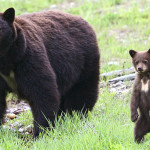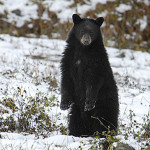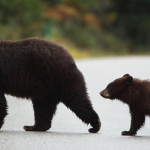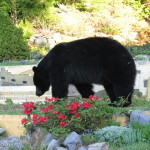4 Thoughts About Bear Encounters
If you’ve been watching the news this week you no doubt came across the report of a bear attack near Timmins, Ontario resulting in serious injuries to a 30-year old man, the death of his dog, and the resulting death of the bear. The story is horrible as it is rare and we’re thankful the story didn’t end with the man’s funeral.
As an advocacy group for bears it is difficult for us to hear these stories and they remind us of how important our role of educating people in bear country is to the peaceful co-existence of humans and bears. At the Get Bear Smart Society we believe humans and bears can safely and respectfully coexist and we also believe it takes some intentionality.
When it comes to bear encounters there is no black and white list of what to do and what not to do. That said, there are many guidelines that should be adopted when encountering a bear; more than can be adequately stated in this blog post. However, here are a few thoughts, points, and links I’d like to point you to.
First, it is quite normal to be frightened by the presence of a bear when you come across one in the wild. Unfortunately, stories of bear attacks like the one near Timmins and many movie portrayals of bears tend to make them out to be vicious predators, monsters of the forest.
In truth, most bears are as frightened of you as you are of them and the reality is that most bear encounters rarely lead to aggressive bear behavior; rarer still are bear attacks (less than one fatal bear attack/year in North America over the last 110 years).
Second, bears have a well-developed sense of personal space and – like humans – it varies bear-to-bear. In any bear encounter, our default response is to provide as much space as possible for the bear, a mutually beneficial arrangement.
Third, in the bear attack story coming out of Timmins there was a dog involved. Of course we don’t know the details about what happened in this particular story but we do know that a well-trained dog is often helpful in avoiding bear encounters. On the flip side, dogs can agitate an already stressed out bear and occasionally that bear will chase a high-tailing dog right back to their owners! Clearly this is not a situation any dog owner wants to be in.
Fourth, in a bear encounter it is helpful to recognize the type of bear and whether it is curious, defensive, aggressive, or predatory, and then respond appropriately. An easy-to-read but longer form article on the topic is found here and should be read by anyone living in bear country!
Anyhow, it is active bear season across North America and for those living in or visiting bear country, please take a few moments to get bear smart. Peaceful and respectful coexistence with bears can be a reality!








